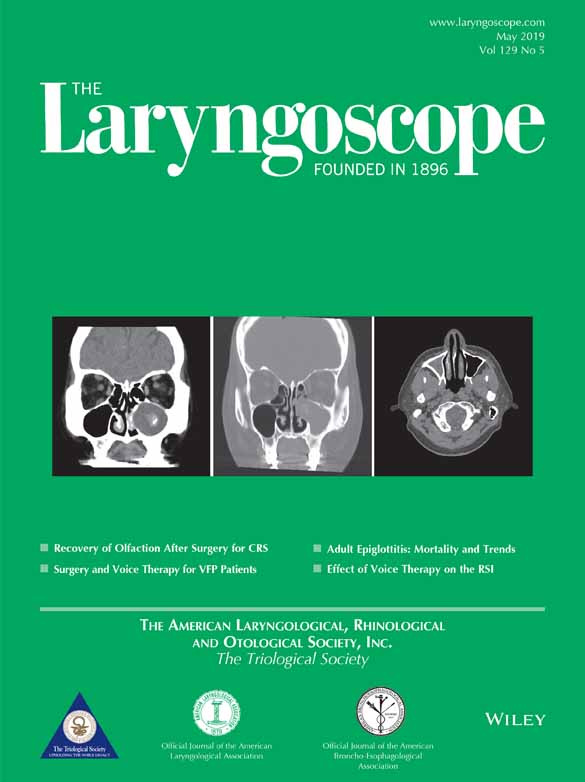Clinical Characteristics of Bilateral Meniere's Disease in a Single Asian Ethnic Group
This work was supported by a National Research Foundation of Korea grant funded by the Korean government (2014R1A2A1A11051088) to s.h.k.
The authors have no other funding, financial relationships, or conflicts of interest to disclose.
Abstract
Objectives/Hypothesis
To identify the clinical characteristics of patients with bilateral Meniere's disease (MD) in an Asian population.
Study Design
Cross-sectional retrospective study.
Methods
We compared the clinical features of bilateral MD (BMD) and unilateral MD (UMD) in 320 Asian patients with single ethnicity. Demographic variables; age of onset; inner ear function; the coexistence of related disorders such as vestibular migraine, delayed MD, systemic autoimmune diseases, and familial MD; and prognoses were analyzed and compared.
Results
The overall prevalence of BMD was 5.6%. The mean age of disease onset was 40.3 ± 14.8 and 47.0 ± 14.1 years for patients with BMD and UMD, respectively (P = .07). Demographic variables were not significantly different between patients with BMD and UMD (P > .05). Inner ear function, evaluated by hearing thresholds, caloric tests, and cervical vestibular evoked myogenic potentials, was significantly more deteriorated in the first involved ear of patients with BMD than in the second involved ear or the affected side of patients with UMD (P < .05). Among the comorbid conditions, only the prevalence of delayed MD was significantly higher in patients with BMD than in patients with UMD. Systemic autoimmune disease was found in only three patients with UMD. There was no significant prognostic difference between patients with UMD and BMD (P > .05).
Conclusions
A low prevalence of BMD, a higher frequency of delayed MD in BMD patients, and a low frequency of systemic autoimmune diseases in both UMD and BMD patients are significant findings in an Asian population.
Level of Evidence
4 Laryngoscope, 129:1191–1196, 2019




